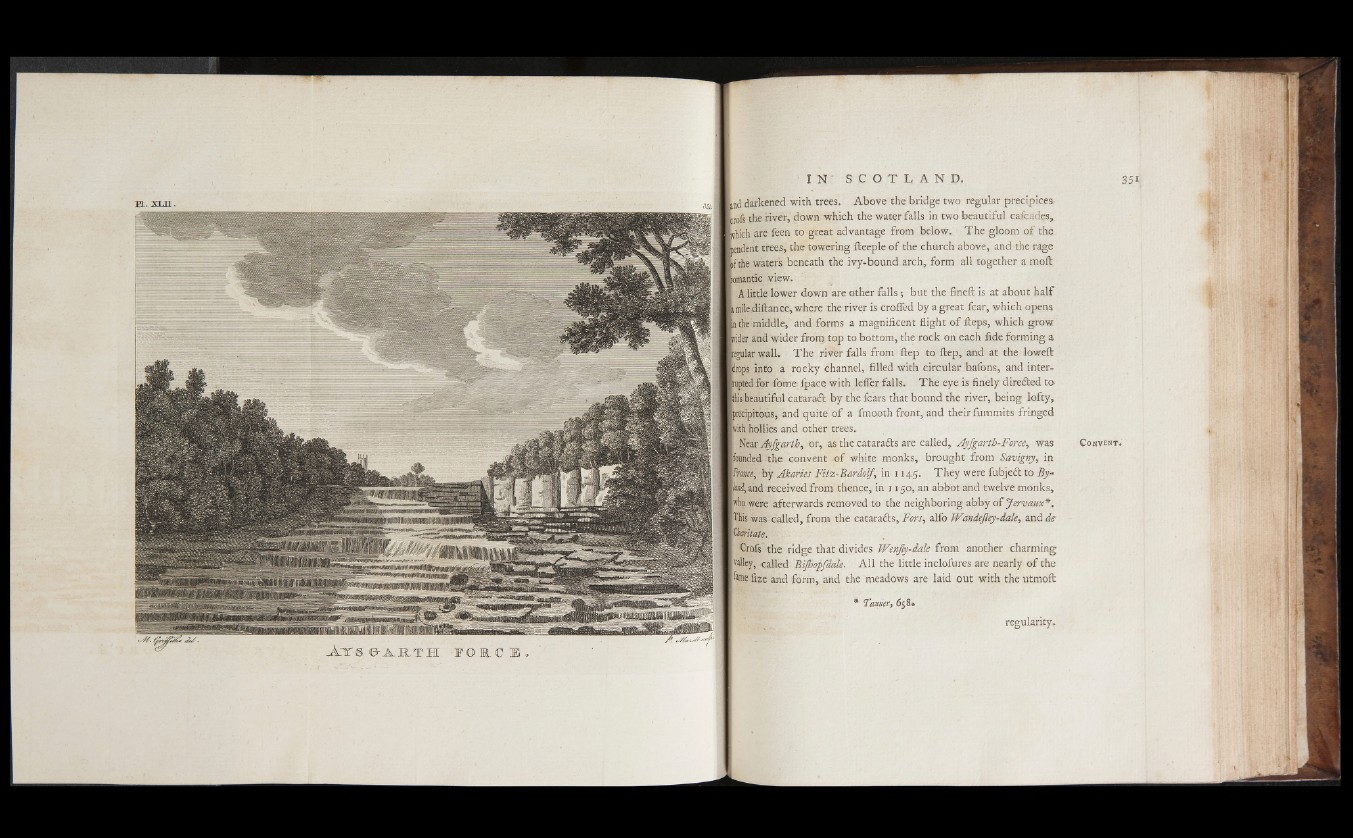
Ld darkened with trees. Above the bridge two regular precipices,
fcrofs the river, down which the water falls in two beautiful cafcades,
Lhich are feen to great advantage from below. The gloom of the
pendent trees, the towering fteeple of the church above, and the rage
tf the waters beneath the ivy-bound arch, form all together a moil
iomantic view. 1 A little lower down are other falls; but the fineil is at about half
kmilediftance, where the river is eroded by a great fear, which opens
ji the middle, and forms a magnificent flight of fteps, which grow
kider and wider from top to bottom, the rock on each fide forming a
tegular wall. The river falls from ftep to ftep, and at the loweft
props into a rocky channel, filled with circular hafons, and interrupted
for fome fpace with lefler falls. The eye is finely directed to
his beautiful cataraft by the fears that bound the river, being lofty,
tweipitous, and quite of a fmooth front, and their fummits fringed
pith hollies and other trees.
N&aAyJgarth, or, as the catarafts are called, Ayfgarth-Force, was
founded the convent of white monks, brought from Savigny, in
mnee, by Akaries Fitz-Bardolf, in 1 145. They were fubjecl to By-
mi, and received from thence, in 1150, an abbot and twelve monks,
po were afterwards removed to the neighboring abby of Jervaux*.
This was called, from the catarafts, Fors, alfo Wandejley-dale, and de
Cbaritate.
Crofs the ridge that divides WenJIy-dale from another charming
¡valley, called Bijhopfdale. All the little inclofures are nearly of the
fize and form, and the meadows are laid out with the utmoil
C onvent.
* Tanner, 6$%»
regularity*